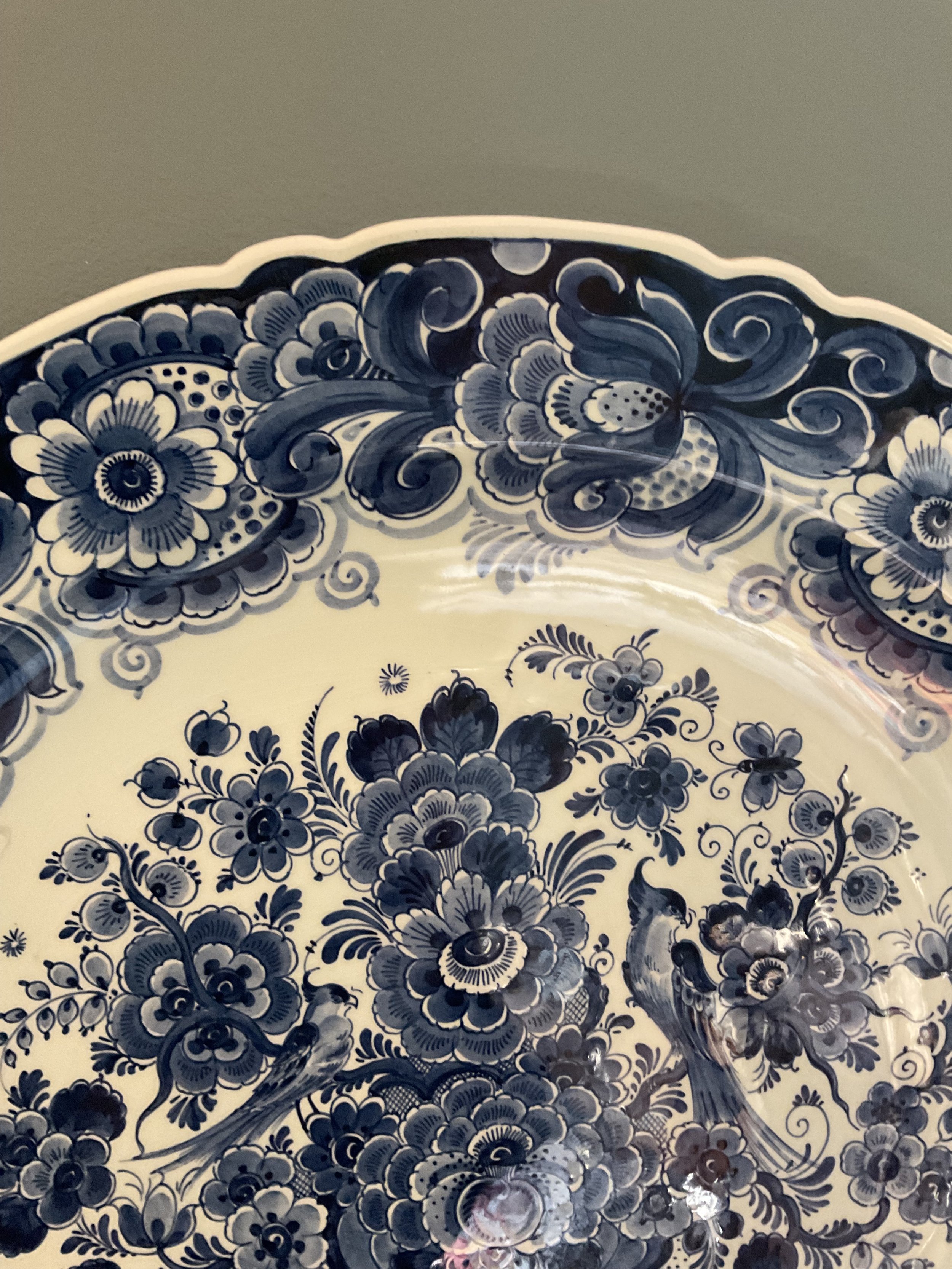 Image 1 of 9
Image 1 of 9

 Image 2 of 9
Image 2 of 9

 Image 3 of 9
Image 3 of 9

 Image 4 of 9
Image 4 of 9

 Image 5 of 9
Image 5 of 9

 Image 6 of 9
Image 6 of 9

 Image 7 of 9
Image 7 of 9

 Image 8 of 9
Image 8 of 9

 Image 9 of 9
Image 9 of 9










Elegant French Vieux Limoges Tureen And Underplate
This elegant tureen and underplate from Vieux Limoges features a beautiful floral design bordered by heavy gold trim. The tureen stands on four white feet with gold detail. The handle on the lid of the tureen has been created in a botanical theme. On the underside of both the tureen and the plate there are several Limoges marks.
Limoges porcelain is a hard paste porcelain produced by factories in and around Limoges, France. The production of Limoges porcelain began in the late 18th century. By about 1830, Limoges had replaced Paris as the main centre for private porcelain factories. Limoges has retained this position to the present day. Revered for its beauty and craftsmanship, kaolin Limoges clay is translucent, durable, non-porous and pure white. Kaolin (also known as China clay) is a hydrated aluminium silicate crystalline mineral formed over many millions of years. European efforts to discover the secrets of making hard paste porcelain had lasted for centuries. It was accidently discovered around 1776 at Saint- Yrieix-la-Perche, close to Limoges. A chemist’s wife, who was out foraging for ingredients, thought the white substance would make a good replacement for soap, which could be used to wash and bleach linen. Some well known makers of Limoges include Bernardaud, J.L. Coquet, Raynaud, Haviland, Jaune de Chrome and Albert Pinto. At the beginning of 1892, Limoges marks were black, between 1900 to 1914 they were red and from 1920 to 1932 they were green.
This divine tureen with underplate is in excellent condition. It would make a stunning table centerpiece. The underplate measures approximately 41.5 cms by 34.5 cms. The tureen stands approximately 26 cms high. The diameter across the top of the tureen is 19.5 cms and it measures approximately 28.5 cms across from handle to handle.
This elegant tureen and underplate from Vieux Limoges features a beautiful floral design bordered by heavy gold trim. The tureen stands on four white feet with gold detail. The handle on the lid of the tureen has been created in a botanical theme. On the underside of both the tureen and the plate there are several Limoges marks.
Limoges porcelain is a hard paste porcelain produced by factories in and around Limoges, France. The production of Limoges porcelain began in the late 18th century. By about 1830, Limoges had replaced Paris as the main centre for private porcelain factories. Limoges has retained this position to the present day. Revered for its beauty and craftsmanship, kaolin Limoges clay is translucent, durable, non-porous and pure white. Kaolin (also known as China clay) is a hydrated aluminium silicate crystalline mineral formed over many millions of years. European efforts to discover the secrets of making hard paste porcelain had lasted for centuries. It was accidently discovered around 1776 at Saint- Yrieix-la-Perche, close to Limoges. A chemist’s wife, who was out foraging for ingredients, thought the white substance would make a good replacement for soap, which could be used to wash and bleach linen. Some well known makers of Limoges include Bernardaud, J.L. Coquet, Raynaud, Haviland, Jaune de Chrome and Albert Pinto. At the beginning of 1892, Limoges marks were black, between 1900 to 1914 they were red and from 1920 to 1932 they were green.
This divine tureen with underplate is in excellent condition. It would make a stunning table centerpiece. The underplate measures approximately 41.5 cms by 34.5 cms. The tureen stands approximately 26 cms high. The diameter across the top of the tureen is 19.5 cms and it measures approximately 28.5 cms across from handle to handle.
This elegant tureen and underplate from Vieux Limoges features a beautiful floral design bordered by heavy gold trim. The tureen stands on four white feet with gold detail. The handle on the lid of the tureen has been created in a botanical theme. On the underside of both the tureen and the plate there are several Limoges marks.
Limoges porcelain is a hard paste porcelain produced by factories in and around Limoges, France. The production of Limoges porcelain began in the late 18th century. By about 1830, Limoges had replaced Paris as the main centre for private porcelain factories. Limoges has retained this position to the present day. Revered for its beauty and craftsmanship, kaolin Limoges clay is translucent, durable, non-porous and pure white. Kaolin (also known as China clay) is a hydrated aluminium silicate crystalline mineral formed over many millions of years. European efforts to discover the secrets of making hard paste porcelain had lasted for centuries. It was accidently discovered around 1776 at Saint- Yrieix-la-Perche, close to Limoges. A chemist’s wife, who was out foraging for ingredients, thought the white substance would make a good replacement for soap, which could be used to wash and bleach linen. Some well known makers of Limoges include Bernardaud, J.L. Coquet, Raynaud, Haviland, Jaune de Chrome and Albert Pinto. At the beginning of 1892, Limoges marks were black, between 1900 to 1914 they were red and from 1920 to 1932 they were green.
This divine tureen with underplate is in excellent condition. It would make a stunning table centerpiece. The underplate measures approximately 41.5 cms by 34.5 cms. The tureen stands approximately 26 cms high. The diameter across the top of the tureen is 19.5 cms and it measures approximately 28.5 cms across from handle to handle.
Not suitable for delivery via Australia Post. Collection by appointment. Please make contact if you would like to arrange another type of delivery.























